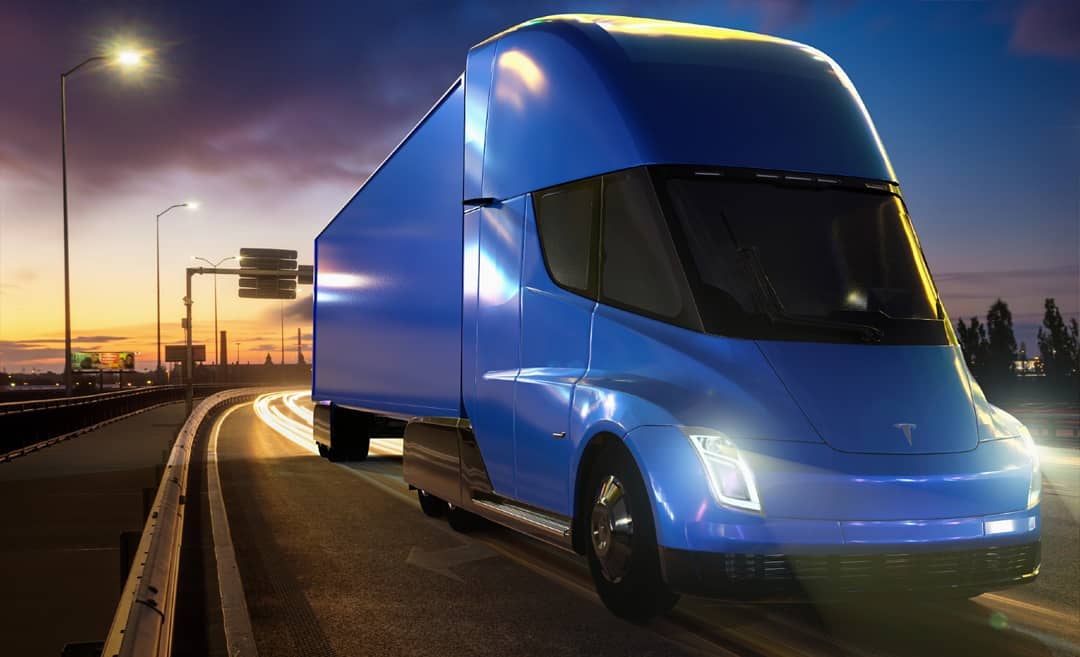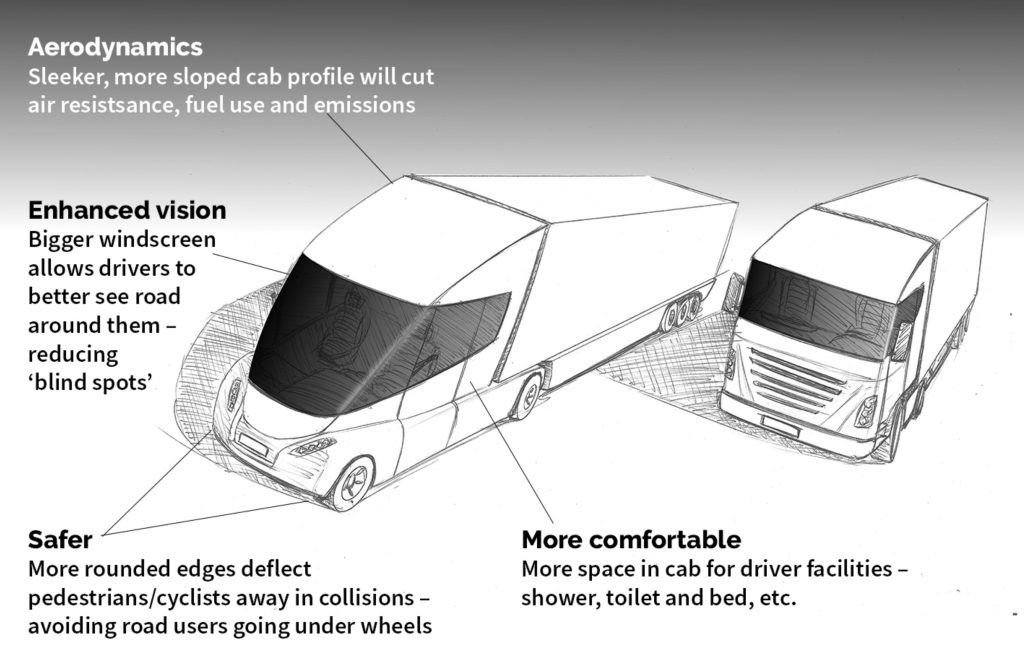

News
Tesla Semi & Convoy Mode are a perfect fit for EU Commission’s updated mobility strategy
The Tesla Semi and its Convoy Mode feature could gain a strong foothold in Europe now that the EU Commission has released its plans to promote sustainable and smart transportation options in the region. The EU Commission released its Sustainable and Smart Mobility strategy last week.
The strategy focused on three key factors, namely sustainability, smart mobility, and resilience. It included goals for the passenger car industry, but also prominently discussed making public transportation and heavy-duty vehicles carbon neutral.
Zero-Emission Lorries and the Tesla Semi
The EU Commission plans to have at least 30 million zero-emission cars and 80,000 carbon neutral lorries, or heavy duty trucks like the Tesla Semi, in operation by 2030. It will propose a revision in CO2 standards for cars and vans in Europe by June 2021 and review carbon standards for heavy-duty vehicles by 2022.
The EU Commission’s plans for zero-emission lorries puts the Tesla Semi in an advantageous position. Besides being carbon neutral, the Tesla Semi also aligns with the EU Parliament’s truck manufacturing law.

Last year, the EU Parliament voted for a law that required heavy-duty vehicle manufacturers to produce more aerodynamic, energy efficient trucks. Regulations in the law depicted a truck with 80-90 cm cabs and bigger windshields for a better view of the road. The European Federation for Transport and Environment released an illustration of the EU Parliament’s ideal heavy-duty vehicle design and it was very similar to the Tesla Semi.
Between the EU Commission and EU Parliament, it seems the game has been set for Tesla. The scales seems to tip more in favor for Tesla and the Semi when the Commission’s Smart Mobility plan comes into play.
Tesla Semi’s Convoy Mode in Europe
As for Smart Mobility, the EU Commission wants to proactively create favorable conditions for the development of new technologies. The Commission even stated that it would provide “all necessary legislative tools for their [new technologies’] validation.”
Support for autonomous vehicles is specifically mentioned in the EU Commission’s strategy, giving the Tesla Semi yet another advantage in Europe’s heavy-duty vehicle industry. Tesla’s advanced driver-assist software, Full Self-Driving, has been laid with some restrictions in Europe, but that may change in the future.
Tesla’s autonomous software development will definitely make it to the Semi and one feature in particular could be a gamer changer in the industry–Convoy Mode. Back in 2017, when Tesla unveiled the Semi, Elon Musk shared that the company’s Class 8 truck was already capable of Convoy Mode, which would allow multiple Semis to semi-autonomously draft in close proximity with each other. Since then, Tesla’s FSD and Autopilot software have gone through vast improvements, suggesting that Convoy Mode only improved as well.
Trucking veteran Sean Chenault was impressed by the Semi’s feature set and was particularly taken by Convoy Mode. “Having autonomous vehicles, you don’t need to pay a driver, and you don’t need to worry about hours of services,” he said. The trucking industry has been struggling with a shortage of drivers lately due mostly to safety concerns. Features like Convoy Mode have been one possible solution to solving driver shortage.
The Tesla Semi’s place in the EU Future
Chenault said the Semi was “a good thing for the trucking industry as a whole.” And it may be good for the EU Commission’s Sustainable and Smart Mobility strategy, too, specifically when it pertains to lorries.
Tesla’s business as an all-electric car maker would definitely benefit for the EU Commission’s new strategy. Tesla has already been gaining some more ground in Europe over the years with the Tesla Model 3. Next year could be another big year for Tesla in Europe with Giga Berlin and the release of the Model Y in the region. With the Semi in the picture, Tesla could cement itself as a key player in the region’s transportation sector.
News
Tesla begins Robotaxi certification push in Arizona: report
Tesla seems serious about expanding its Robotaxi service to several states in the coming months.

Tesla has initiated discussions with Arizona transportation regulators to certify its driverless Robotaxi service in the state, as per a recent report from Bloomberg News. The move follows Tesla’s launch of its Robotaxi pilot program in Austin, Texas, as well as CEO Elon Musk’s recent comments about the service’s expansion in the Bay Area.
The Arizona Department of Transportation confirmed to Bloomberg that Tesla has reached out to begin the certification process for autonomous ride-sharing operations in the state. While details remain limited, the outreach suggests that Tesla is serious about expanding its driverless Robotaxi service to several territories in the coming months.
The Arizona development comes as Tesla prepares to expand its service area in Austin this weekend, as per CEO Elon Musk in a post on X. Musk also stated that Tesla is targeting the San Francisco Bay Area as its next major market, with a potential launch “in a month or two,” pending regulatory approvals.
Tesla first launched its autonomous ride-hailing program on June 22 in Austin with a small fleet of Model Y vehicles, accompanied by a Tesla employee in the passenger seat to monitor safety. While still classified as a test, Musk has said the program will expand to about 1,000 vehicles in the coming months. Tesla will later upgrade its Robotaxi fleet with the Cyercab, a two-seater that is designed without a steering wheel.
Sightings of Cybercab castings around the Giga Texas complex suggests that Tesla may be ramping the initial trial production of the self-driving two-seater. Tesla, for its part, has noted in the past that volume production of the Cybercab is expected to start sometime next year.
In California, Tesla has already applied for a transportation charter-party carrier permit from the state’s Public Utilities Commission. The company is reportedly taking a phased approach to operating in California, with the Robotaxi service starting with pre-arranged rides for employees in vehicles with safety drivers.
News
Tesla sets November 6 date for 2025 Annual Shareholder Meeting
The automaker announced the date on Thursday in a Form 8-K.

Tesla has scheduled its 2025 annual shareholder meeting for November 6, addressing investor concerns that the company was nearing a legal deadline to hold the event.
The automaker announced the date on Thursday in a Form 8-K submitted to the United States Securities and Exchange Commission (SEC). The company also listed a new proposal submission deadline of July 31 for items to be included in the proxy statement.
Tesla’s announcement followed calls from a group of 27 shareholders, including the leaders of large public pension funds, which urged Tesla’s board to formally set the meeting date, as noted in a report from The Wall Street Journal.
The group noted that under Texas law, where Tesla is now incorporated, companies must hold annual meetings within 13 months of the last one if requested by shareholders. Tesla’s previous annual shareholder meeting was held on June 13, 2024, which placed the July 13 deadline in focus.
Tesla originally stated in its 2024 annual report that it would file its proxy statement by the end of April. However, an amended filing on April 30 indicated that the Board of Directors had not yet finalized a meeting date, at least at the time.
The April filing also confirmed that Tesla’s board had formed a special committee to evaluate certain matters related to CEO Elon Musk’s compensation plan. Musk’s CEO performance award remains at the center of a lengthy legal dispute in Delaware, Tesla’s former state of incorporation.
Due to the aftermath of Musk’s legal dispute about his compensation plan in Delaware, he has not been paid for his work at Tesla for several years. Musk, for his part, has noted that he is more concerned about his voting stake in Tesla than his actual salary.
At last year’s annual meeting, TSLA shareholders voted to reapprove Elon Musk’s compensation plan and ratified Tesla’s decision to relocate its legal domicile from Delaware to Texas.
Elon Musk
Grok coming to Tesla vehicles next week “at the latest:” Elon Musk
Grok’s rollout to Tesla vehicles is expected to begin next week at the latest.

Elon Musk announced on Thursday that Grok, the large language model developed by his startup xAI, will soon be available in Tesla vehicles. Grok’s rollout to Tesla vehicles is expected to begin next week at the latest, further deepening the ties between the two Elon Musk-led companies.
Tesla–xAI synergy
Musk confirmed the news on X shortly after livestreaming the release of Grok 4, xAI’s latest large language model. “Grok is coming to Tesla vehicles very soon. Next week at the latest,” Musk wrote in a post on social media platform X.
During the livestream, Musk and several members of the xAI team highlighted several upgrades to Grok 4’s voice capabilities and performance metrics, positioning the LLM as competitive with top-tier models from OpenAI and Google.
The in-vehicle integration of Grok marks a new chapter in Tesla’s AI development. While Tesla has long relied on in-house systems for autonomous driving and energy optimization, Grok’s integration would introduce conversational AI directly into its vehicles’ user experience. This integration could potentially improve customer interaction inside Tesla vehicles.
xAI and Tesla’s collaborative footprint
Grok’s upcoming rollout to Tesla vehicles adds to a growing business relationship between Tesla and xAI. Earlier this year, Tesla disclosed that it generated $198.3 million in revenue from commercial, consulting, and support agreements with xAI, as noted in a report from Bloomberg News. A large portion of that amount, however, came from the sale of Megapack energy storage systems to the artificial intelligence startup.
In July 2023, Musk polled X users about whether Tesla should invest $5 billion in xAI. While no formal investment has been made so far, 68% of poll participants voted yes, and Musk has since stated that the idea would be discussed with Tesla’s board.
-

 Elon Musk1 week ago
Elon Musk1 week agoTesla investors will be shocked by Jim Cramer’s latest assessment
-

 Elon Musk3 days ago
Elon Musk3 days agoElon Musk confirms Grok 4 launch on July 9 with livestream event
-

 Elon Musk14 hours ago
Elon Musk14 hours agoxAI launches Grok 4 with new $300/month SuperGrok Heavy subscription
-

 News7 days ago
News7 days agoTesla Model 3 ranks as the safest new car in Europe for 2025, per Euro NCAP tests
-

 Elon Musk2 weeks ago
Elon Musk2 weeks agoA Tesla just delivered itself to a customer autonomously, Elon Musk confirms
-

 Elon Musk1 week ago
Elon Musk1 week agoxAI’s Memphis data center receives air permit despite community criticism
-

 Elon Musk2 weeks ago
Elon Musk2 weeks agoTesla’s Omead Afshar, known as Elon Musk’s right-hand man, leaves company: reports
-

 News2 weeks ago
News2 weeks agoXiaomi CEO congratulates Tesla on first FSD delivery: “We have to continue learning!”
















